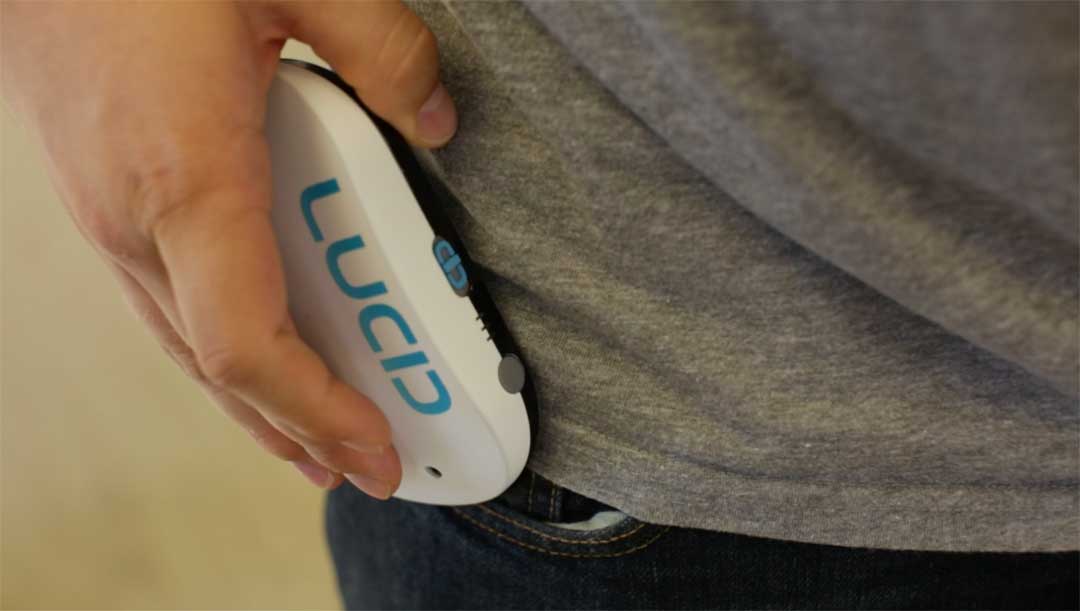 NEWS
NEWS
 NEWS
NEWS
 NEWS
NEWS
Virtual reality (VR) has long been seen in the mind of the public as a way to “see” within computers. As a result, it has an audience with their eyes peeled for everything from computer graphics VR movies and video games with the option of being enjoyed with VR. However, as a method of viewing the world and recording video, VR can also be a way to create immersive memories in the same way that camcorders create 2D point-of-view videos.
To put this power in the hands of consumers, Lucid VR launched the world’s first 180-degree stereoscopic 3D virtual reality camera that is small enough to fit in the palm of your hand. The device features one button point-and-shoot–allowing users to either take a 3D photograph or a 3D movie with equal ease. The device weighs just a little under eight ounces and runs 5.15” length, 2.65” height and 1.02” in thickness.
The LucidCam also comes with functionality to easily edit and share pictures and video but one takeaway of interest is that it can be connected to a broadcaster via HDMI out meaning that the camera opens up the possibility for stereoscopic 3D livestreaming. (It would make mobile livestreaming apps such as Periscope much more interesting. Perhaps, Stereoperiscope?)
Photos and movies taken by the LucidCam can be viewed with VR equipment such as Google, Inc.’s mobile Google Cardboard and apps are being planned for headsets such as the Oculus Rift.
The LucidCam has been under development for two years and is available now via an ongoing Indigogo campaign. With 47 days left at the time of publication, the campaign is 62 percent of the way to its goal of $100,000. Early adopters could purchase a LucidCam via the campaign for $299 (estimated as half-price from the suggested retail price of the finished product).
The LucidCam looks like a black pod with two “sensors” on it (of course these are the stereoscopic cameras) and it’s no bigger than an ordinary cell phone. Image source: Courtesy of Lucid VR
“There are infinite applications for Virtual Reality, but the potential for truly creative content is wasted if only a limited number of people have access to the tools for capturing VR footage,” said Lucid VR CEO Han Jin. “Our team worked tirelessly for the last two years to rethink the current video market and break down multiple camera module solutions into a 2-lens compact system.”
Jin and the Lucid VR team see a huge number of applications for 180-degree photos and movies as taken by the LucidCam and the immersive nature of VR. Most of those applications are social and dovetail nicely with already present uses of media, just in 3D.
“In other words, a grandson on the West Coast of the United States can create vivid videos for his grandmother in China to show her exactly what his world is like,” Jin added. “And the grandmother can use something as simple as a cell phone paired with our various cardboards and viewing devices to look at the 3D 180-Degree video. I know, because I’m that grandson.”
Jin also believes that the human immersive experience is not too far away with a product such as the LucidCam.
“Go skydiving with friends from your living room, or experience underground ruins with family across the globe,” Jin continued. “We can now truly let everyone see what we’re doing on any adventure.”
With a full 1080 HD resolution that can be delivered to each eye and two microphones for stereo/binaural recording, the camera could have huge implications for bringing the action home. Although the camera is only capable of a framerate of 30 (where 60 has become the new standard for video gamers, it would be good if real life kept up) and the battery is currently rated for only an hour.
Stretch goals on the Indigogo campaign include adding a 360-degree capability to the LucidCam and making it splash resistant. This could add VR adventures to the list of skydiving and underground spelunking such as water skiing and walking in the rain.
LucidCam represents an upcoming product-type that will take advantage of an audience not yet extant. While mobile devices do VR reasonably well currently (and Oculus Inc. co-founder Palmer Luckey thinks they’ll win the audience first) an entire line of VR devices is coming out for PCs and gaming consoles in 2016. As a result, cameras that can take VR pictures and record VR movies are still right now paving the way for how people will use VR when the consumer market gets that first crop.
This will most certainly make 2016 an interesting year and LucidCam is set well to join it, although at a potential $600 for a single device it may be slightly out of reach for the everyday user, it isn’t too much for the professionals who have a good chance of producing a niche for stereoscopic entertainment for all those headsets coming next year.
THANK YOU